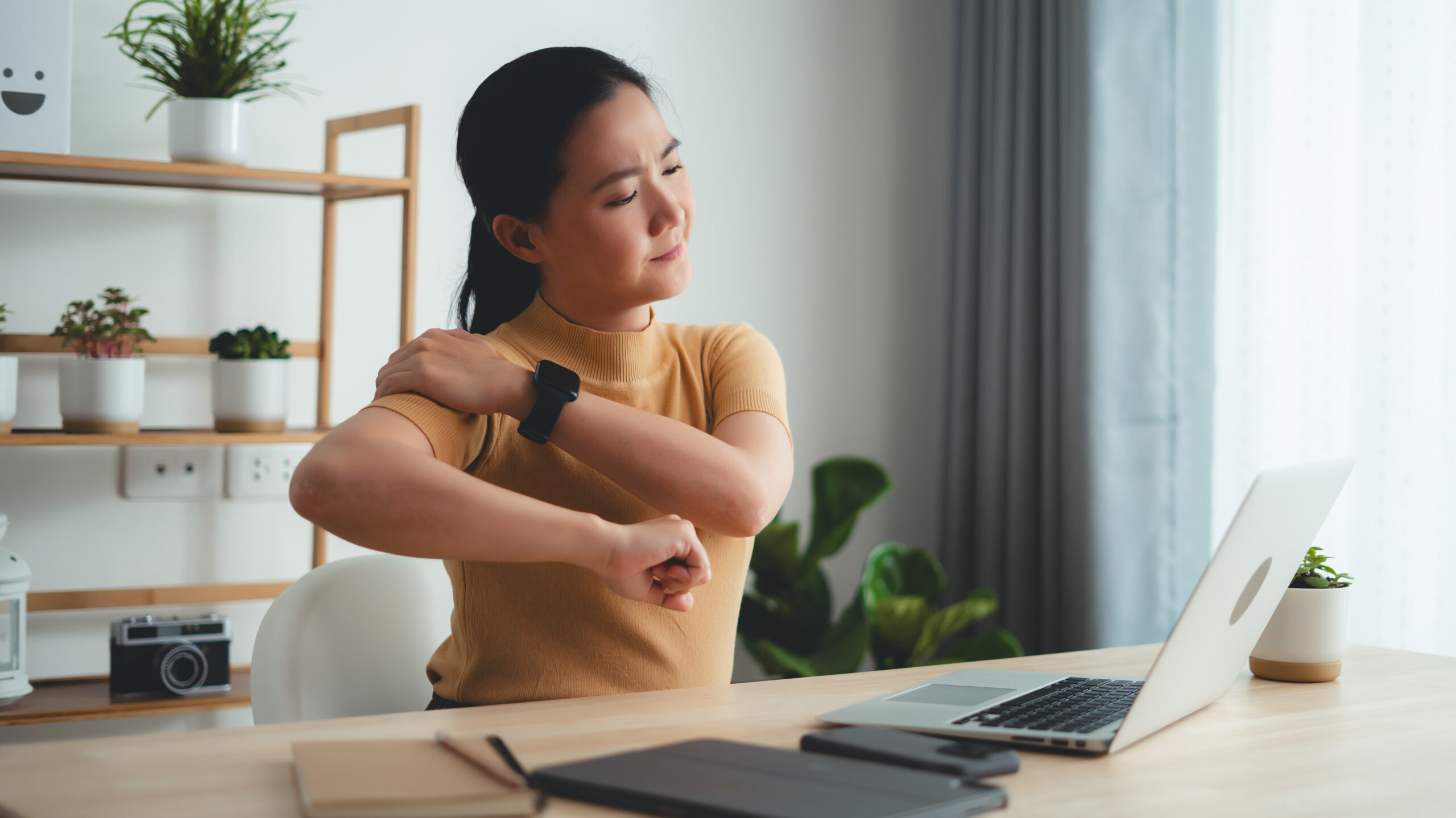Blog
This is the one move a physical therapist recommends for people who sit a lot and suffer from shoulder pain

Shoulder pain can be frustrating, especially if you’re dealing with a niggle that just won’t go away. But it’s common for people who work desk jobs and are constantly hunched over laptops.
Stretching the shoulder muscles can help relieve tension, but you should try strengthening the area too if you want to get rid of the achiness for good.
Sanjit Kooner is a physical therapist who regularly deals with clients experiencing shoulder pain, and he says there’s one underrated exercise he always recommends: face pulls.
“Banded face pulls are a great way to target the scapulohumeral stabilizers [a group of muscles that stabilize and control the shoulders], especially the posterior rotator cuff,” he explains.
This exercise pulls your shoulder blades back and together, putting you in the opposite position of a typical hunched-over sitting posture
“Face pulls are especially useful for improving posture, shoulder function, and long-term injury prevention—particularly in people who sit a lot or do overhead training,” says Kooner.
How to do face pulls with rotation
You’ll need a long resistance band to do the move, although Kooner suggests practicing without it first to build control and awareness of the muscles involved in the movement.
Sets: 3 Reps: 10-12
- Attach your resistance band to a fixed surface—something heavy, like your couch or bed, or a squat rack if you’re at a gym. You can do the exercise seated or standing, but make sure the band is secured at chest height.
- Next, grip the band and move away from the anchor so that your arms are extended there’s some tension in the band. This is your starting position.
- Pull the band towards your shoulders and up, finishing with your hands above your head and a 90° angle in your elbows. Adding this rotation at the end of the move helps activate the rotator cuff.
- Return to the starting position with control.
“You can adjust the difficulty by changing the band’s resistance or your hand placement,” says Kooner.
He also suggests focusing on pulling your shoulder blades in and slightly down during the exercise, which will help activate additional muscles that support the shoulders, including the infraspinatus, teres minor, and mid/lower trapezius.












